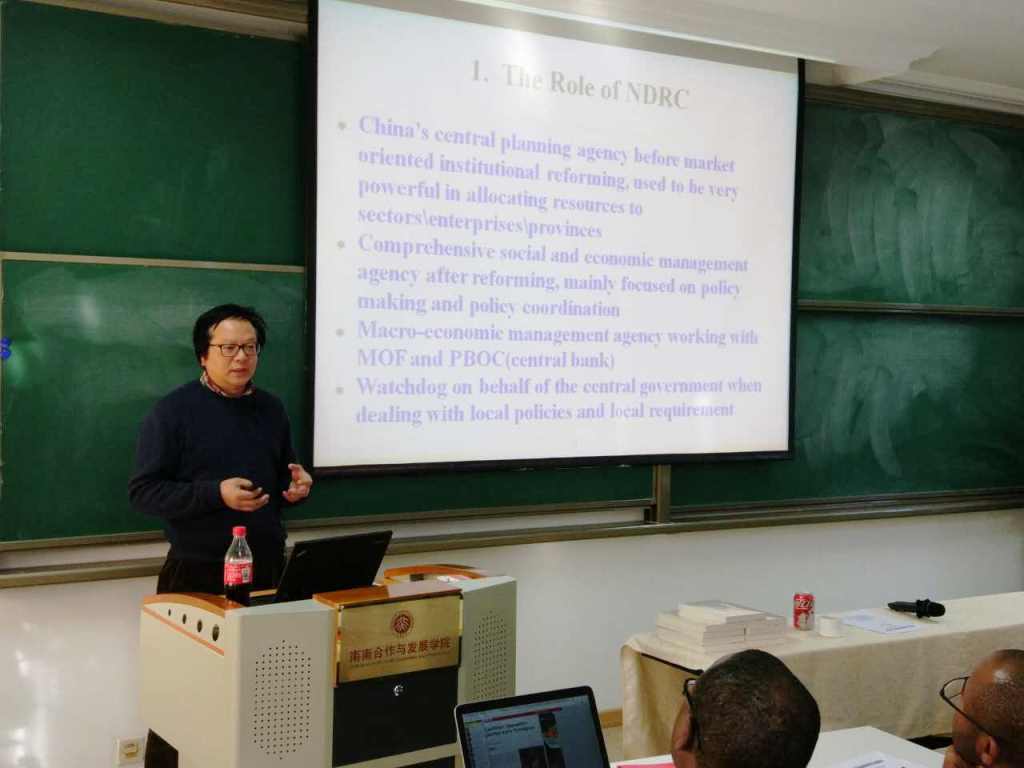
Failing to plan is planing to fail. The wise saying which has proved to be true since time immemorial. This logic, by extension, applies to every society and country at large. It is against this backdrop that the People’s Republic of China set up the National Development and Reform Commission (NDRC).

Mr. Xu Lin, the Director General of NDRC
Speaking at a lecture titled “China’s Development Planning: Output, Process and Reforming”, organized by the Institute of South-South Cooperation and Development (ISSCAD), Peking University, Mr. Xu Lin, the Director General of NDRC says the Commission is a macroeconomic management agency under the Chinese State Council, which has broad administrative and planning control over the Chinese economy. Since China is a big and diversified country, policies should be properly crafted and coordinated. Mr. Xu, who has worked with NDRC for about 2 decades, explained the historical transition of China’s five-year plan which began in 1953. According to him, the 1st to 5th five-year plan (1953–1980) was under the planned economy with focus on laying the industrial foundation of China. The 6th to 8th five-year plan (1980-1995) marked the beginning of reform and opening up with emphasis on Readjusting, Reforming and Rectifying. The 9th, 10th, 11th and 12thfive-year plans focused on poverty eradication, improving the quality and efficiency of economic growth and scientific development while placing high priority on the well-being of the people.
Mr. Xu asserted that in a landmark development, the National People’s Congress approved the 13th five-year plan (2016–2020) by 97.3% votes. He expressed optimism that the goals set-out in the 13th five-year plan will be achieved in view of the relatively stable world economy, solid political leadership, China’s high savings rate, relatively sufficient human resources, increasing talents, widespread infrastructure, well-constructed industrial system, hardworking Chinese people and the huge domestic market. With more than 250 airports, more than two thousand organized sea ports, 7.9 million college graduates per annum, 4.6 million km of road and 12,000km of expressway, high-speed railway of 20,000km accounting for more than 60% of railway mileage in the world. China has huge advantage.
He regretted that China’s Gini Coefficient is about 0.46 but highlighted that Education, Relocation, Industrial support and financial support are some of the poverty alleviation and empowerment measures the government will adopt as stipulated in the 13th five-year plan. He emphasized the need for an innovation-driven and efficient economy while noting that Beijing, Shenzhen and Shanghai will be China’s Regional Harbor Cities of Innovation. He observed that concerted effort would be made to avoid middle-income and Thucydides's traps. In his remarks, the Academic Dean of ISSCAD, Prof. Fu Jun, thanked the distinguished lecturer for addressing students saying “your insight and rich experience will definitely be of significant benefit and shape the ideas of students most of whom are from developing countries”.
By Omole
